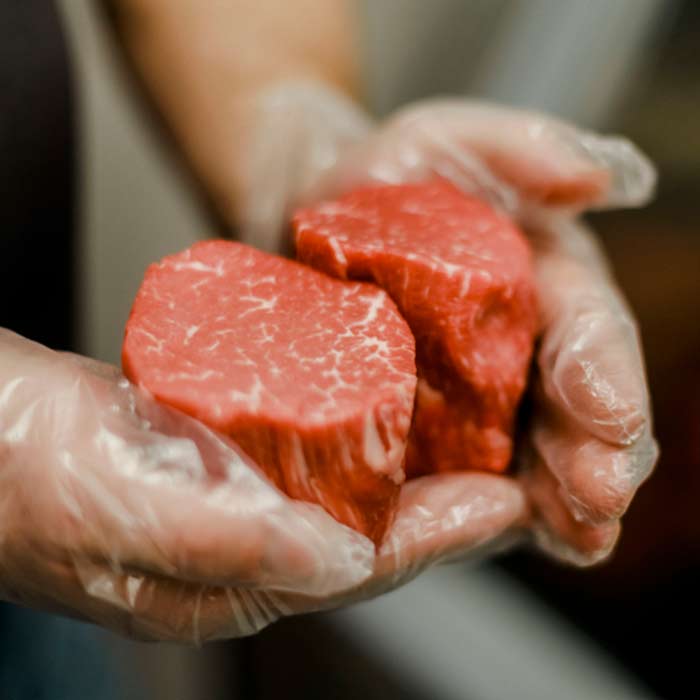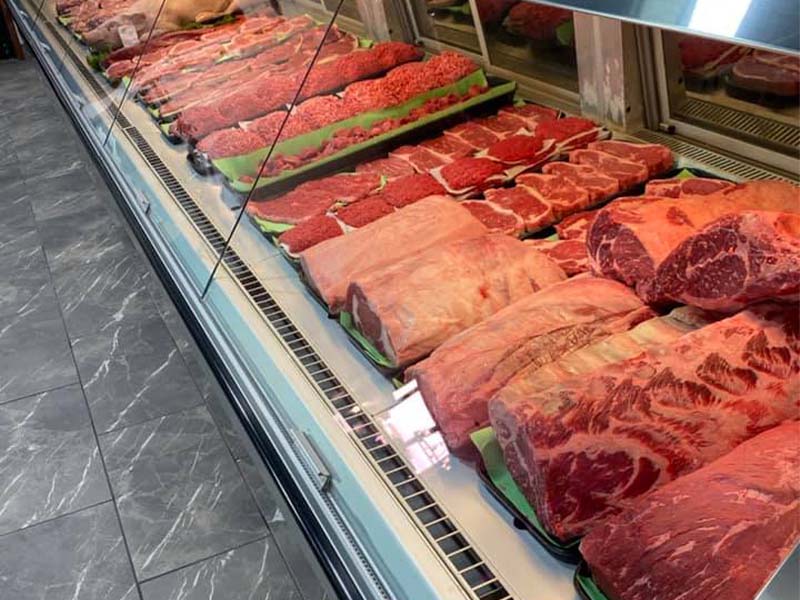Explore the Local Flavor at Bagley Farms Meat Market Edwardsville IL: Fresh and Delicious
Explore the Local Flavor at Bagley Farms Meat Market Edwardsville IL: Fresh and Delicious
Blog Article
Uncover the Art of the Butcher's Cut in a Modern Meat Market
In the ever-evolving landscape of modern meat markets, the butcher's cut has actually transcended its standard origins, combining age-old workmanship with modern techniques. Today's butchers are not just processors of meat; they are well-informed artisans that highlight sustainability and moral sourcing. Their know-how in picking and preparing cuts customized to certain cooking requirements supplies an unrivaled dining experience. What absolutely sets the contemporary butcher apart is their ability to forge a much deeper connection in between consumers and the beginnings of their meat. Exactly how do these masters equilibrium tradition with technology, and what ramifications does this have for the future of meat consumption?
Evolution of Butchery Methods
The evolution of butchery strategies shows an abundant tapestry of advancement and adjustment driven by developments in technology, adjustments in consumer need, and a much deeper understanding of meat scientific research. Historically, butchery was a craft gave through generations, with approaches developed over centuries to make best use of yield and taste. However, the commercial change introduced automation, changing conventional methods and enabling massive processing.
The mid-20th century saw butchery strategies additionally fine-tuned by scientific understandings into muscle mass biology and meat aging, improving both inflammation and taste. Developments like vacuum cleaner packaging and refrigeration prolonged item shelf-life, enabling butchers to branch out offerings and boost quality assurance. This duration also noted the surge of specialized equipment, such as band saws and meat slicers, which boosted accuracy and efficiency in meat handling.

The 21st century has presented electronic innovation into the butchery realm. Electronic systems currently assist in monitoring pet provenance and optimizing cuts to satisfy particular customer choices. In addition, a renewal in artisanal butchery has arised, blending typical abilities with modern-day understanding to cater to consumers seeking moral and lasting meat options. This advancement highlights a vibrant interaction in between practice and advancement, conference modern demands while preserving the craft's heritage.
Comprehending Meat Cuts
Understanding the intricacies of meat cuts is crucial for both butchers and consumers looking for high quality and value. Each cut comes from a different component of the pet, imparting unique flavors, structures, and food preparation techniques - bagley farms meat market edwardsville il. Proficiency of these differences not only improves cooking experiences but additionally takes full advantage of the energy of each carcass. For butchers, specific cuts show skill and respect for the craft, making certain minimal waste and optimal yield.

Understanding muscle make-up is essential; muscle mass utilized much more frequently by the pet tend to be harder and are best suited for slow-moving cooking methods, while less-used muscle mass, like those found in the news loin, are much more tender and ideal for barbecuing or roasting. Experience with these distinctions encourages consumers to make informed choices, boosting their culinary endeavors.
Choosing Top Quality Meat
Choosing the right meat includes even more than simply selecting an aesthetically appealing piece from the display screen. The art of selecting high quality meat calls for a discerning eye and expertise of specific characteristics that symbolize quality and quality.
Secondly, think about the marbling, which refers to the white streaks of fat within the muscle mass. Correct marbling is a vital indicator of tenderness and flavor, as it melts during food preparation, enhancing the meat's juiciness. Bear in mind, greater marbling frequently associates with exceptional quality cuts, such as USDA Prime.
Structure is one more critical aspect; meat should feel solid to the touch, not slimy or extremely soft. Furthermore, bear in mind the scent. Fresh meat should have a tidy, neutral scent, without any sour or off-putting odors.
Coupling Cuts With Food Preparation Methods

On the other hand, tougher cuts like brisket and chuck roast are rich in collagen, which damages down right into jelly when prepared slowly. These cuts are suitable for braising or sluggish roasting, allowing the meat to soften gradually and establish deep, complicated flavors. In a similar way, cuts such as short ribs and pork shoulder prosper with slow-cooking methods, where extended cooking times change their durable textures into delicious meals.
Lamb shanks and oxtail, which need prolonged food preparation to soften, are best candidates for stewing or slow-moving simmering. These techniques coax out abundant, hearty tastes while maintaining dampness. By recognizing the special characteristics of each cut, cooks and home cooks alike can boost their cooking developments, ensuring each dish is both pleasing and memorable.
The Butcher's Role Today
Navigating the developing landscape of the modern-day meat market, the butcher's duty today prolongs past plain prep work of cuts. Contemporary butchers are culinary artisans, educators, and advocates for lasting methods. They connect the void between the ranch and the fork by making sure moral sourcing, comprehending animal husbandry, and focusing on openness in the supply chain. This change reflects the growing consumer demand for high quality over quantity, where provenance and pet welfare are vital.
In addition to crafting accurate cuts, butchers currently involve directly with consumers, offering cooking read more advice and customizing selections to match specific requirements and preferences. Their knowledge in meat aging, marbling, and flavor accounts encourages consumers to make enlightened decisions, enhancing their culinary experiences. This customized service exemplifies the butcher's evolving duty as a trusted expert in the kitchen area.
Moreover, butchers are crucial in minimizing waste, using whole pets to develop varied products such as sausages and supplies. This detailed technique not just respects the pet but likewise straightens with modern sustainability objectives. This way, the modern-day butcher embodies both practice and technology, adapting to an ever-changing market while maintaining the artistry and stability of their craft.
Conclusion
Proficiency in understanding diverse meat cuts and top quality indicators empowers butchers to provide informed referrals, straightening details cuts with ideal cooking techniques. By recognizing historical practices while accepting contemporary needs, the butcher's function remains important in today's sophisticated meat market.
Report this page